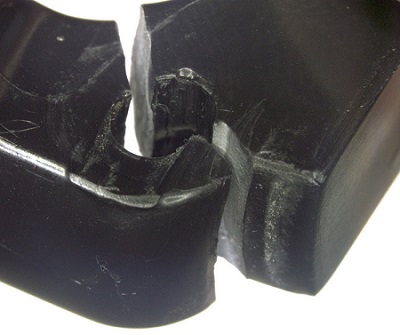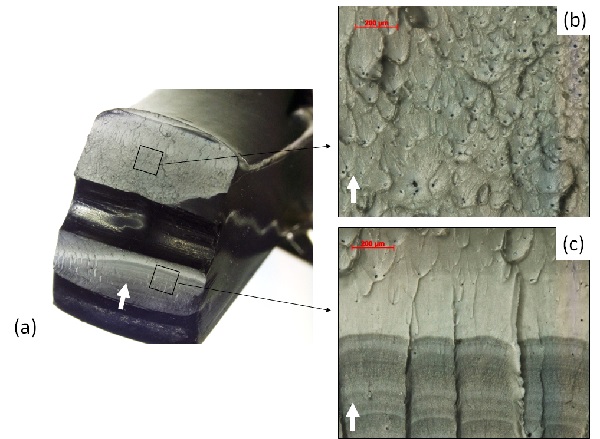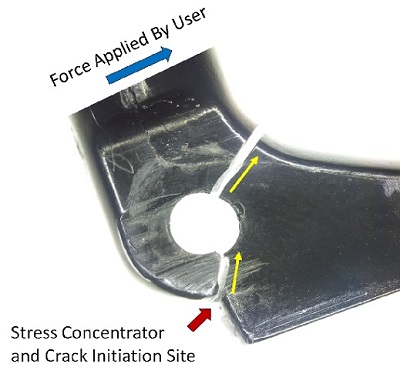Technical Challenge
A plastic lever on a consumer product failed unexpectedly in service at the fulcrum pin.
The lever was subjected to repeated loading in service.
Veryst Solution
Veryst conducted a failure analysis of the broken component and determined that the part failed by fatigue.
Beach marks on the fracture surface provided clear evidence of fatigue crack growth (Figure 2c).
The crack grew progressively until the stress intensity factor applied to the crack tip exceeded the fracture toughness of the plastic, at which point final fracture occurred.
Final fracture was ductile in nature as evidenced by the dimpled morphology of the fracture surface (Figure 2b).
Review of the part design revealed an edge on the side of the lever subjected to tensile stresses (Figure 3).
This edge acted as both a significant stress concentration and the initiation site for fatigue crack growth.
Veryst offered design recommendations to reduce the stress concentration while maintaining part functionality.


